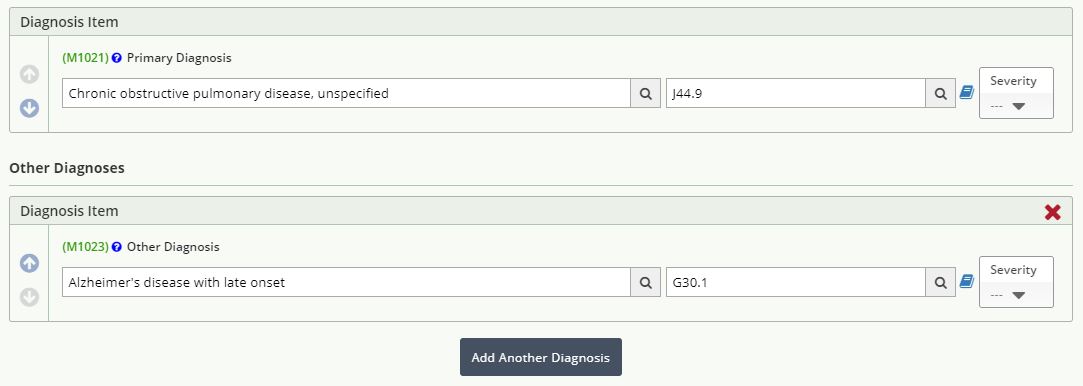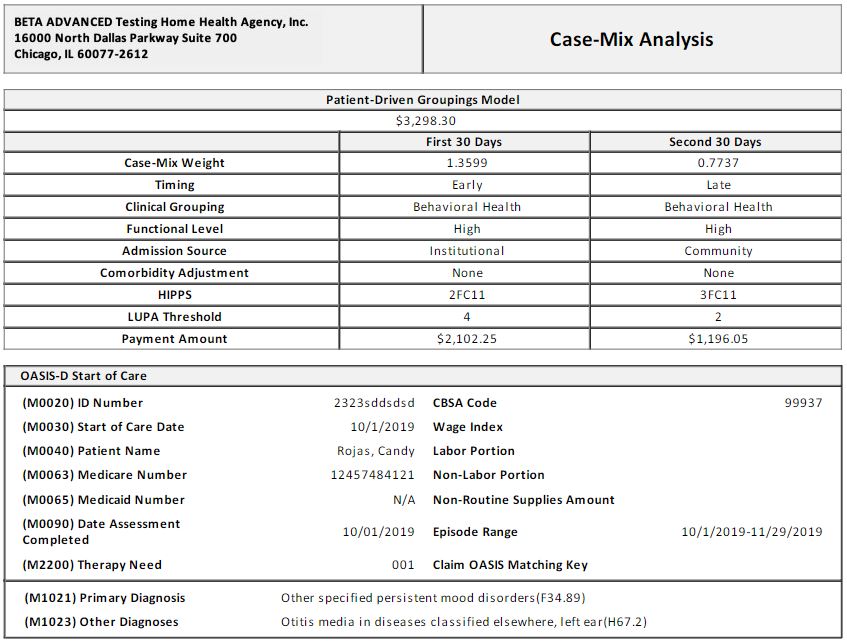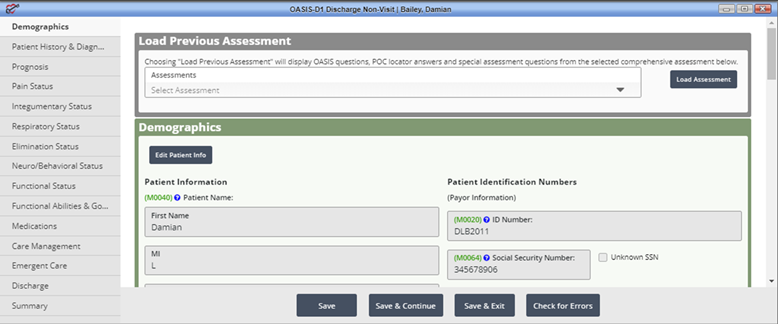OASIS-D1 is required for all episodes that begin on or after January 1, 2020.
To schedule an OASIS-D1 assessment, navigate to the Schedule Center under the Schedule tab and add the appropriate OASIS-D1 task from the following options:
Two items have been added in the OASIS-D1 Follow-Up:
23 questions became optional at specific time points. For these questions, clinicians can choose not to submit an answer by selecting the equal sign (=). For questions where the clinician selects the equal sign, an answer will not be submitted to CMS.
Although CMS no longer requires responses to these questions, agencies should instruct clinicians on the appropriate agency protocol, as optional items may be helpful for use in QAPI initiatives.

The following items pre-populate in the OASIS-D1 Follow-Up assessment and remain editable for clinicians to adjust as needed:

Scheduling
To help agencies maintain compliance, the system will prevent users from scheduling an OASIS-D assessment on or after January 1. The system will also prevent users from scheduling OASIS-D Recertifications on or after December 27, 2019. Recertifications scheduled on or after December 27, 2019 must use OASIS-D1 and have a M0090 date of January 1, 2020 or later.
Recertifications
To accommodate the five-day window, OASIS-D1 assessments must be used beginning December 27, 2019 for episodes that begin on or after January 1, 2020. Agencies must enter an artificial M0090 date of 01/01/2020 for episodes on or after December 27 but before January 1. These OASIS assessments will not be submitted until January 1.

Questionable Encounter Codes
Beginning January 1, the system will not allow questionable encounter codes. When a clinician attempts to enter a questionable encounter code, a red box will highlight the unacceptable code and a message will appear instructing the user to obtain a payable code.
Axxess provides a Top 25 Questionable Encounter Codes resource that lists commonly used questionable encounter codes and information on identifying codes that generate payment under PDGM.
PDGM Case-Mix Analysis
On the signature page, after the Check for Errors has been done, agencies can see the Home Health Resource Group data for each 30-day payment period, including the four patient characteristics that calculate the HHRG and the LUPA threshold for each 30-day pay period.
The new PDGM Case-Mix Analysis is accessible in the Schedule Center. Click the green dollar sign symbol ($) to access the PDGM Case-Mix Analysis.
Schedule tab ➜ Schedule Center ➜ OASIS-D1 Task ➜ $


The new OASIS-D1 Discharge Non-Visit includes all CMS-required fields and omits the assessment portions of the OASIS-D Discharge assessment. The OASIS-D1 Discharge Non-Visit enables agencies to summarize the episode and update the Plan of Care Profile efficiently and seamlessly.

The Task Details page of an OASIS-D1 Discharge Non-Visit automatically has the Billable box unchecked and the Payable box checked.

Updated on 11/25/2019